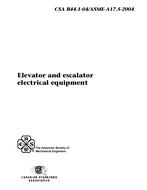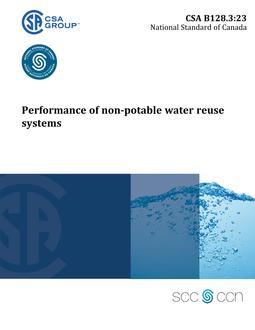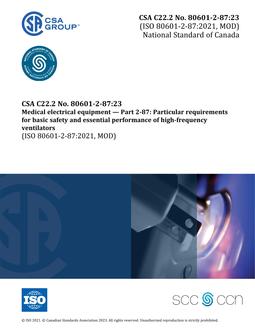
CSA B44.1/ASME-A17.5-04
PDF is text-searchable.
Preface
This is the third edition of CSA B44.1/ASME-A17.5, Elevator and escalator electrical equipment. It supersedes the previous editions published in 1996 and 1991.
1 Scope
1.1The requirements of this Standard apply to the following electrical equipment for elevators, escalators, moving walks, dumbwaiters, material lifts, and elevating devices for persons with physical disabilities (platform lifts and stairway chairlifts):
(a) motor controllers;
(b) motion controllers;
(c) operation controllers;
(d) operating devices; and
(e) all other electrical equipment not listed/certified and labelled/marked according to another product safety standard or code.
The equipment specified in this Standard is intended for installation in accordance with the Canadian Electrical Code, Part I (CSA C22.1) and the National Electrical Code (NFPA 70), whichever is applicable.
Note: Controllers, i.e., motion, motor, and operation controllers, are defined in CSA B44 and ASME A17.1.
1.2The electrical equipment covered by this Standard is intended (a) to be connected to supply circuits at a nominal system voltage of 600 V or less;
(b) for internal voltages that are not more than 1500 V; and
(c) for use in non-hazardous locations in accordance with the rules of the applicable electrical codes.
1.3The object of this Standard is to reduce the risk of injury to persons and damage to property from fire and electrical shock by presenting requirements for the proper design, the good construction, and the high quality of work of the equipment listed in Clause 1.1.
1.4This Standard does not apply to devices that are rated for connection to extra-low-voltage Class 2 supply circuits as defined in the applicable electrical code.Note: Extra-low-voltage circuits are circuits that have a voltage of not more than 30 V rms or 42.4 V peak.
1.5 In CSA Standards, “shall” is used to express a requirement, i.e., a provision that the user is obliged to satisfy in order to comply with the standard; “should” is used to express a recommendation or that which is advised but not required; “may” is used to express an option or that which is permissible within the limits of the standard; and “can” is used to express possibility or capability. Notes accompanying clauses do not include requirements or alternative requirements; the purpose of a note accompanying a clause is to separate from the text explanatory or informative material. Notes to tables and figures are considered part of the table or figure and may be written as requirements. Annexes are designated normative (mandatory) or informative (non-mandatory) to define their application.
1.6SI (metric) units are the primary units of measure in this Standard. The yard/pound (imperial) units in the text have been directly (soft) converted from the SI units.
Product Details
- Published:
- 12/01/2004
- Number of Pages:
- 80
- File Size:
- 1 file , 610 KB
- Same As:
- ASME A17.5-2004 / CSA B44.1-2004


